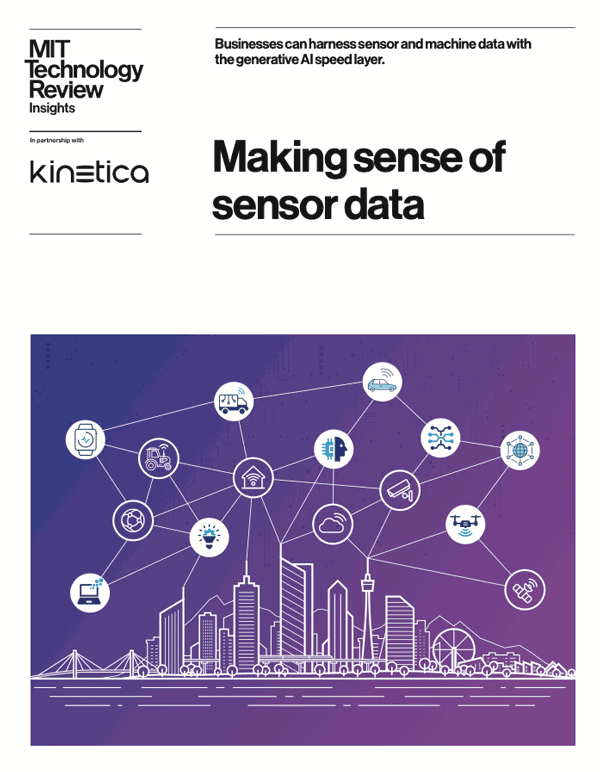10 Reasons Why Kinetica Rocks for Analytics
Today’s analytical workloads require faster query performance, advanced analysis methods, and more frequent data updates. Kinetica meets these needs with its GPU-accelerated analytical database for real-time insights on large and streaming datasets.
We believe that there are still many people who might not know much about Kinetica. Are you one of them? Continue reading—there are at least 10 reasons why we think Kinetica will rock your analytical workloads.
1. The GPU is your new friend
Analytical data systems face several challenges. First, the explosive growth of data has created truly giant datasets, and second, there is a lack of computational capacity to process these massive data sets. So why should you depend only on your CPU? Kinetica is built from the ground up to harness the parallel processing power of the GPU and multi-core devices using vectorized memory structures and SIMD processing.
2. You’re a data scientist? No problem, we’ve got you covered
With Kinetica, you can create killer visual analytical dashboards—easy, fast, and out-of-the- box. Kinetica “Reveal” is a web-based visualization framework that makes it easy to slice, dice, visualize, and interact with data in Kinetica. Reveal provides on-the-fly data analytics and real-time data discovery using easy-to-use drag-and-drop widgets. Reveal accelerates the rendering of charts, maps, and additional data elements by leveraging the GPU. Still need interactive queries on the dataset? Don’t worry—check out the SQL query editor.
3. Scale linearly, without falling apart
Kinetica runs on industry-standard hardware, equipped with GPUs. The GPU delivers almost linear scalability, so you can perform real-time analytics on large datasets, with predictable hardware demands. You can scale horizontally simply by adding additional nodes to distribute the data. This can be combined with scaling up at any time to increase memory capacity and processing power. Sharding of data can be done automatically, or specified and optimized by the user.
4. Nimbly handle in-memory data processing
Compared to some of the most advanced CPU-based in-memory systems, Kinetica can ingest and process data in-memory at high speeds, delivering 10-100x acceleration. But, if your database must be fast, holding data in memory itself is insufficient, because compute resources can quickly become a bottleneck. The GPU can solve this. For example, on a star schema, with fact tables of 150 billion rows connected with multiple dimension tables in a classic distributed JOIN with GROUP BYs, Kinetica can deliver 10-100x better performance with only 1/10th of the hardware.
5. Use the query language you love – SQL
Everyone—including us—loves the SQL query language. Kinetica has a high-speed query execution engine that leverages GPU acceleration to deliver blazingly fast queries. In contrast with other GPU-based database systems, Kinetica offers full JOIN support with left, right, outer, and inner JOINS across many columns and tables. Kinetica also provides full SQL-92 query support through certified JDBC and ODBC connectors, making it painless to swap in Kinetica as a replacement data source for faster, accelerated analytics.
6. Continue your love affair with popular BI and other ecosystem tools
We get it. Sometimes you just cannot throw away the BI investments you’ve already made. The good news is that Kinetica plugs right into your ecosystem and supports a variety of different connectors with other tools. You can connect Kinetica to Apache Hadoop, NiFi, Spark and Spark Streaming, Storm, and Kafka, and other commercial tools such as FME.
Kinetica can also be connected to popular BI tools such as Tableau, MicroStrategy, and Power BI through ODBC/JDBC connectors. Can’t find a connector you love? Don’t forget that you can also take advantage of the native REST API for integration.
7. Build richer analytical applications with geospatial and full-text search
Want to build richer, more intelligent analytical applications? Kinetica provides a built-in geometry engine that combines native geospatial functionality, filtering, and GPU acceleration to work in modern analytical applications where time and location matter. With Kinetica’s natural language processing (NLP), you can select which string columns in the table that you want to search.
8. High availability
Kinetica offers Active/Active HA and automatic replication between clusters. This eliminates a single point of failure in a given cluster and provides reliable and fast recovery from failure. If a node fails, the database continues to work meeting high-nines of availability. Patches and upgrades can happen in parallel, while concurrent sessions are hitting the system during peak hours!
9. Enterprise-grade security
It goes without saying that security is an important part of any modern database platform. From the very start, Kinetica has security in its DNA, offering rich security controls including authentication, authorization, and encryption to meet your security and compliance needs.
10. Outstanding support and documentation
With Kinetica, we’ve got you covered, and you are never alone. We provide our customers with mission-critical support to get you up and running in production without any hiccups.
Getting started with Kinetica is easy with our Quick Start guides. They will take you from knowing relatively little about Kinetica to having a good grasp of the fundamentals. If you want to dive deeper, check out the documentation to get more details around installation, configuration, concepts, and APIs.
We’d love to hear about your Kinetica experiences, and if you have any questions, reach out to us via the forums and one of our experts will get back to you. Why are you waiting? Take Kinetica for a test drive today, and get started building your apps with Kinetica.
Making Sense of Sensor Data

